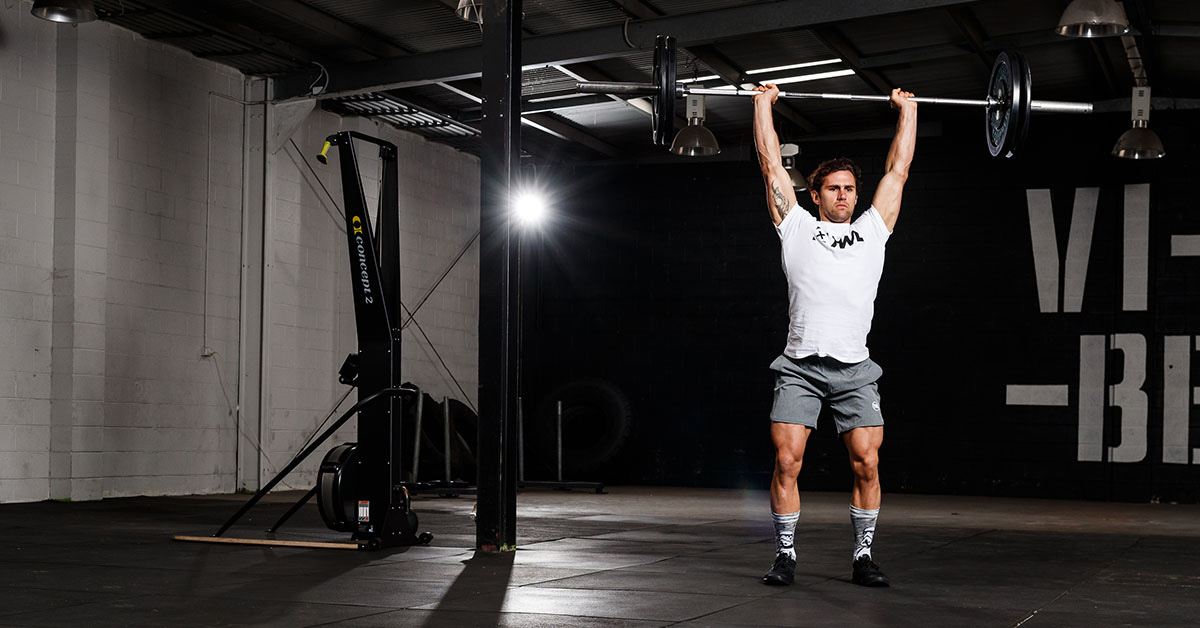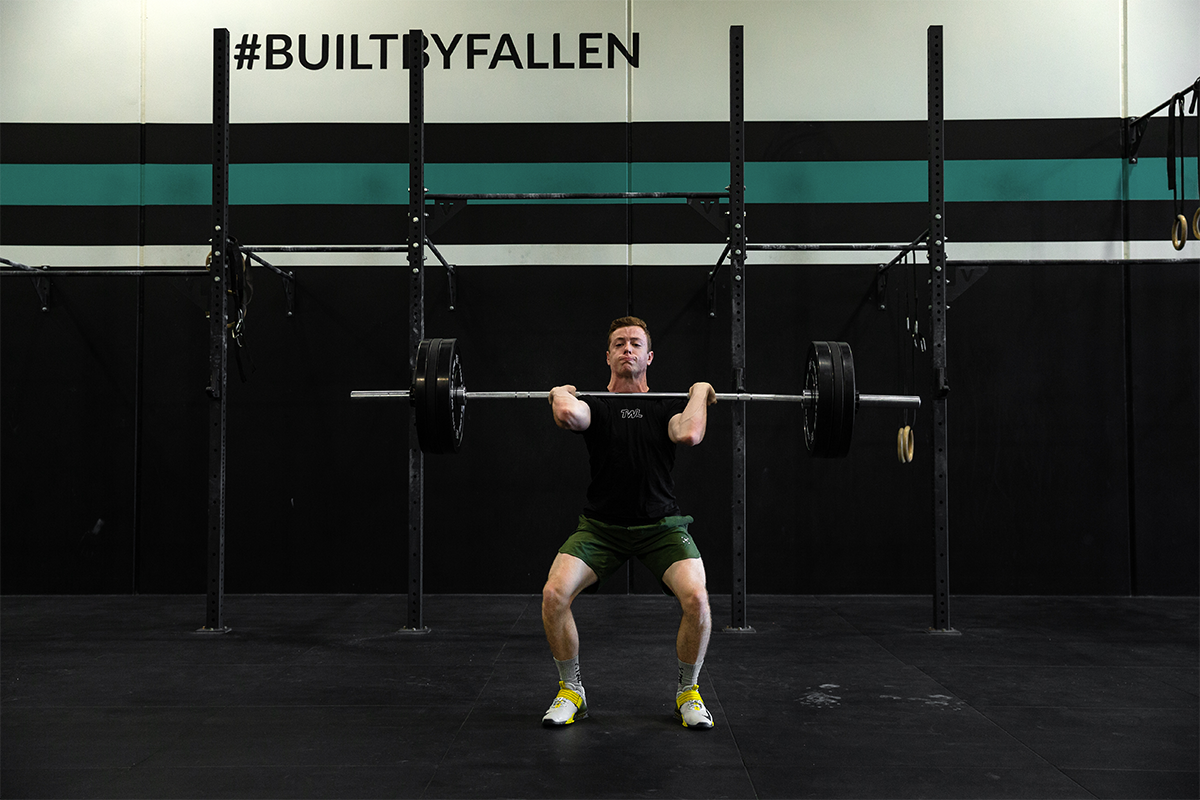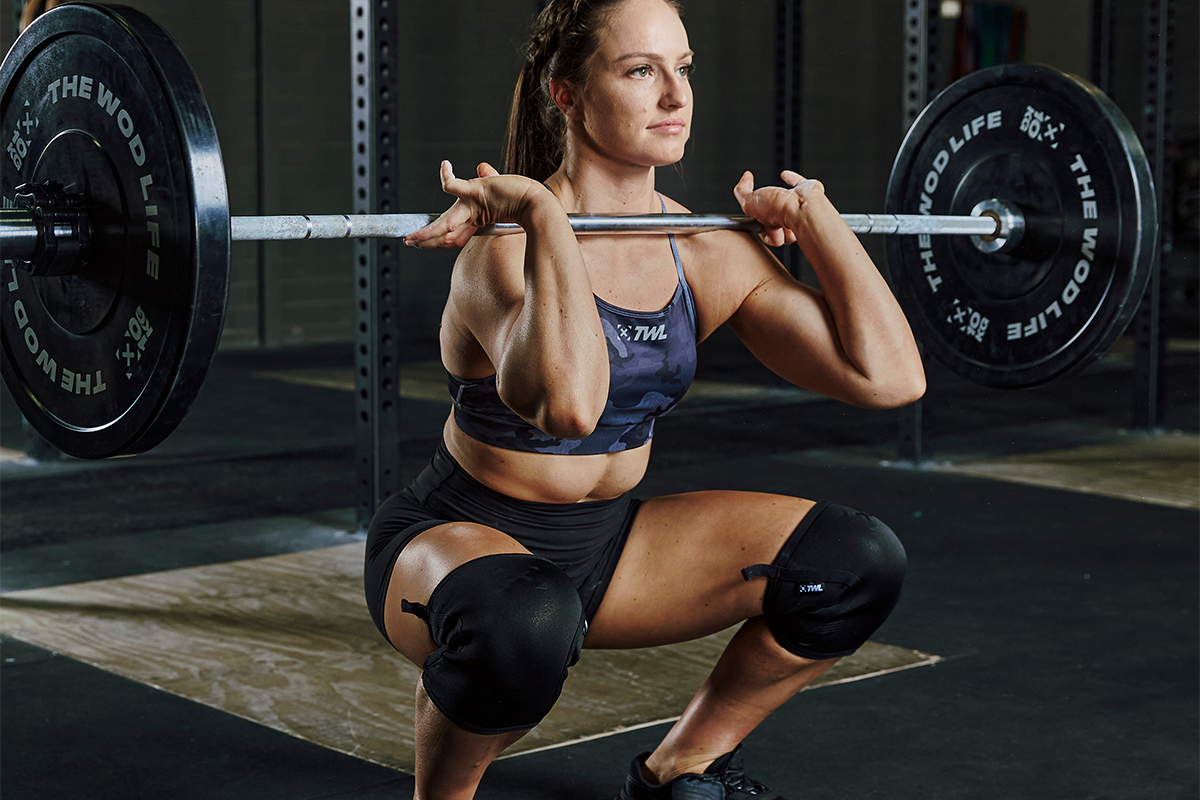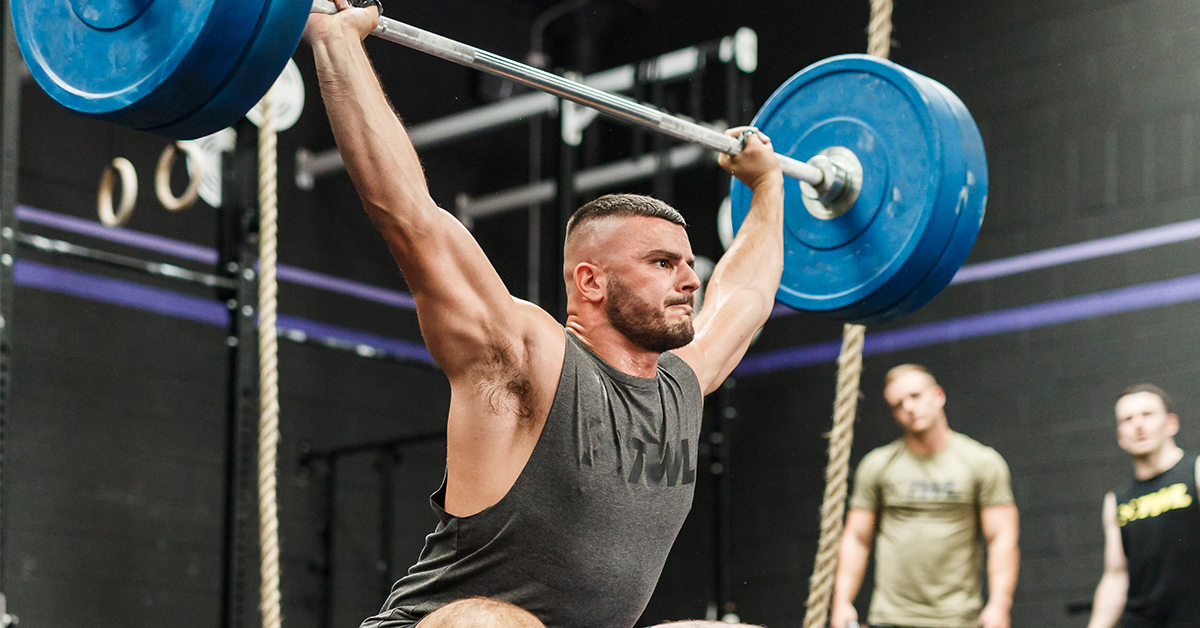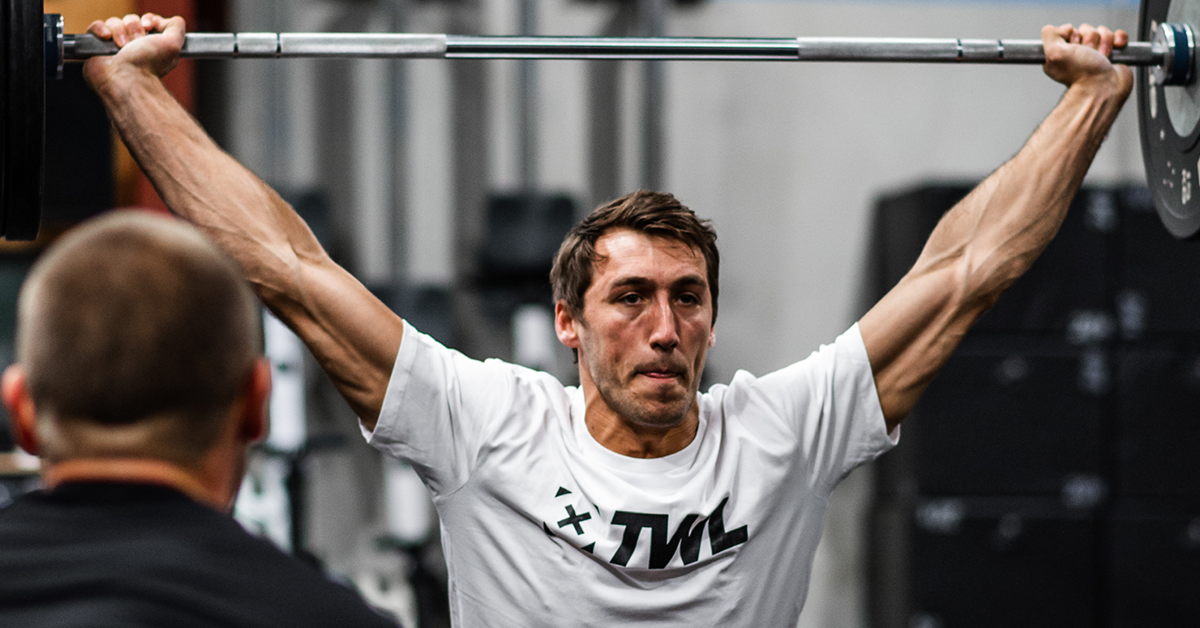“Everyone can snatch, everyone can clean, but only champions can jerk.” – Ivan Abadjiev
In theory, the jerk should be the easiest of the Olympic lifts, right? It’s not like a snatch where I have to take a barbell from the ground, throw it over my head, *pray* and then hope I’m able to catch it in the bottom of my squat before it lands on my head.
The jerk just has to go from your shoulders to overhead in a relatively straight line – child’s play compared to a snatch or clean. Yet, more often than not, the jerk is the downfall of so many lifters. Why is that?
Simply put, for most amateur lifters, it’s a lack of practice. If the only time you’re practicing your split jerk is when you’re going for a new 1RM clean and jerk, you’re setting yourself up for failure. That being said, here are five drills to help develop a rock solid jerk.
5 Drills to Improve Your Split Jerk
1. Footwork Drills
Sometimes, the simplest solutions provide the best answers. Don’t worry, we’ll get into the sexier stuff in a bit, but before that, I find one of the greatest tools for developing a rock solid jerk is a piece of chalk.
There are a ton of videos online showing any number of complicated methods to mark your feet up, but the simplest solution is by starting in your squat stance, and while maintaining that width, drop down into a lunge. Make sure your front leg is stacked over your ankle and your back knee touches the ground directly under your torso.
From there, simply mark the heel of your front foot and toe of your back foot and there you have it. The only thing left to do is practice. Stand tall and practice hitting those marks over and over again until it becomes second nature, till you can think about what you should cook for dinner and still hit those marks.
That’s how you build a strong foundation.
2. Tall Jerk
The tall jerk is used to train quick feet and an aggressive lockout with your arms. You can start this drill in one of two ways: with the bar resting on your shoulders or by pressing and holding the bar at about forehead level.
From here, the goal is to press yourself under the bar and drop into your split stance without doing a dip first. This teaches you to meet the bar properly as well as develop quick footwork. This is a great solution for those athletes that tend to be “too explosive” in the jerk – i.e. the bar crashes on them in the lockout and they bend their elbows slightly before reaching a stable position.
This drill will help those athletes meet the bar properly and develop a strong receiving position.
3. Jerk Balance
You have a 50-50 chance of getting this right – in the split jerk, is the front foot or back foot more important? If you said front foot, congratulations — you’re 100% correct.
This is because at the start of the movement, the bar rests beyond your frontal plane. That’s why it’s so important to aggressively drive the front foot forward and have the bar track back over the center of your body. That’s exactly what the jerk balance is used for.
The drill begins with the bar on your chest with your feet already in your split stance. From there, take about a half step back with your front foot (not all the way back under your hips). Then perform a small dip, and with the back foot still planted, drive through with the front foot and finish the jerk. This teaches the athlete to be aggressive with their footwork as well as work on their timing between stepping out and punching up on the bar.
4. Pause Jerks
The pause jerk is exactly what it sounds like – a jerk with a pause in the bottom of the dip. This is a great tool to have athletes remain flatfooted and balanced during the dip phase of the movement.
Too often we see athletes dip onto their toes during this phase of the lift, which oftentimes causes them to drive the bar out in front of them as they accelerate up. Adding a pause to the bottom of their dip ensures the athlete stays grounded and usually results in a straighter bar path upward.
Note: You can also add a pause to your catch, meaning when you lock out under the bar with your feet in the split. This will point out any imbalances in your foot positioning and almost forces you to correct them.
5. Jerk Recovery
The jerk recovery is a drill used to help strengthen the athlete’s overhead position and lockout as well as practice their recovery with a heavy load overhead. The beauty of the jerk recovery is that all the hard work is done – now all you have to do is stand it up!
Start with the barbell in the rack or on pins at a height just above the top of your head. From there, stand directly under the bar and drive yourself down into your split stance, with arms locked out on the barbell.
Brace and use your legs to lift the bar off the pins before recovering both feet together. Because the athlete is not actually required to lift the barbell from their shoulders to the overhead position, the barbell can be loaded in excess of their current 1RM. This helps builds a stronger lockout and confidence that you can handle heavier loads overhead.

